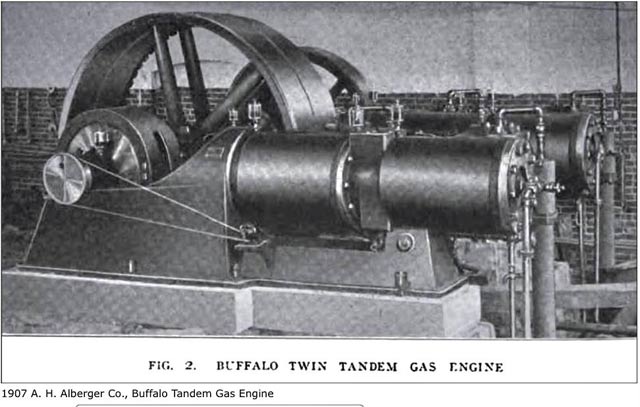
December 2022
The Alberger Story
By Paul Harvey
With the very successful operation of Coolspring Power
Museum’s Alberger engine this year, I decided that Alberger would make a
very interesting article. The engine’s unusual tandem cylinder,
single-acting design was an incentive. I was aware that three existed;
but that was all I knew. Wow! This will be a great adventure for both
the reader and for me. So, let’s look at the maker, the patents, and the
existing engines.
With the very successful operation of Coolspring Power
Museum’s Alberger engine this year, I decided that Alberger would make a
very interesting article. The engine’s unusual tandem cylinder,
single-acting design was an incentive. I was aware that three existed;
but that was all I knew. Wow! This will be a great adventure for both
the reader and for me. So, let’s look at the maker, the patents, and the
existing engines.
The Maker
Who was Alberger? I journeyed to
ancestry.com
to meet Alvan Hyde Alberger. What a story! Here are some of the
highlights of a remarkable career.
Alvan was born in Buffalo, New York, in July of 1878. At
the age of 19 he married Cora, and in 1902 they had twin sons. One died
in infancy, but the other, John Louis Alberger, flourished in the
newspaper business. He was named in honor of Alvan’s father. Alvan was
mechanically inclined and in 1893 earned a Mechanical Engineering degree
from Cornell University. The US census of 1900 lists him as an engineer.
In 1905 he is termed a consulting engineer. The 1910 census names him as
a gas manufacturer.
Alberger did patent the “stuffing box” that is attached
to the head of the back cylinder so that the piston rod can extend to
the front cylinder without leakage. But the four patents noted on the
engine’s name plate are granted to Harry J. Smith and assigned to the
Alberger Gas Engine Company. Hmmm!
We find several entries in the Buffalo city directory listing him as president of the Alberger Gas Engine Company, with Harvey L. Barnes as secretary and treasurer. He is also noted as president of two smaller specialty firms. Sadly, he passed away at age 51 on February 22, 1930. He rests at Forest Cemetery in Buffalo, New York.

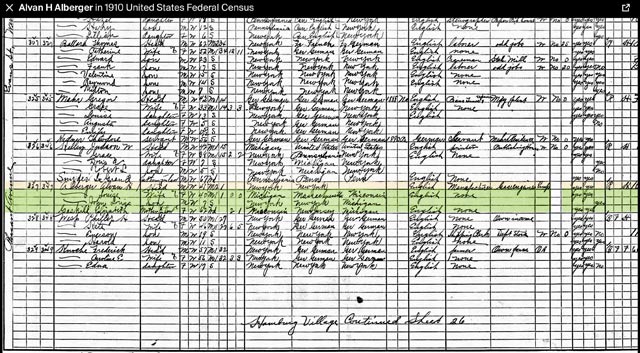

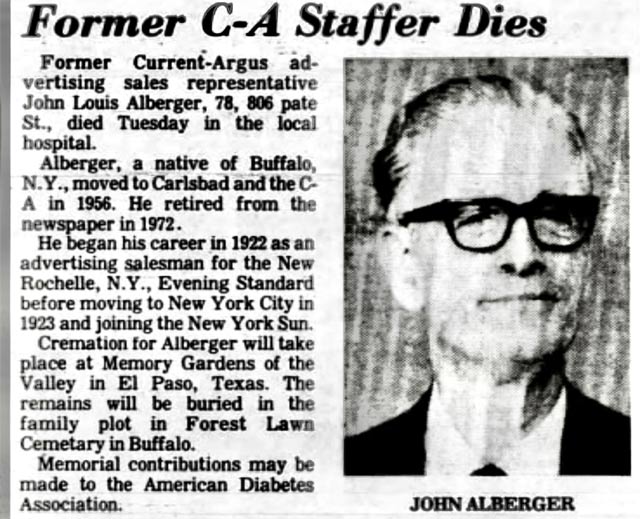
The Patents
The nameplates on the engines list four patents on: August 13, 1901; April 12, 1904; October 17, 1905; and April 24, 1906. So now we will journey to Google Patents to see what we discover.
The 1901 patent, number 34,935, was granted to Harry J. Smith and assigned to the Alberger Gas Engine Company. It covers the frame design featuring the tandem cylinders.
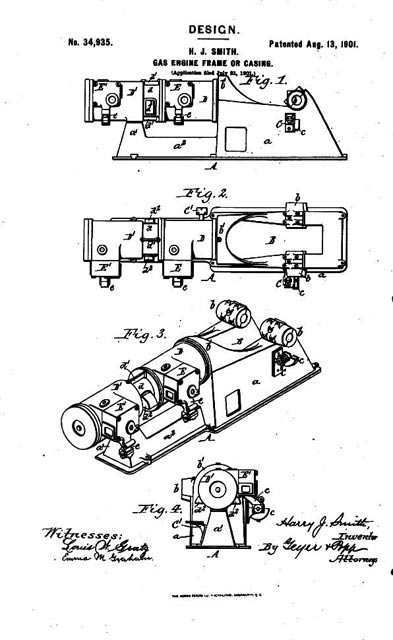
The 1904 patent, number
757,064,
was also granted to Harry J. Smith, and granted to the Alberger Gas
Engine Company. It depicted the electric make and break igniter.

The 1905 patent, number 801,927, granted to Smith and assigned to Alberger, detailed the fuel and air mixing valve.
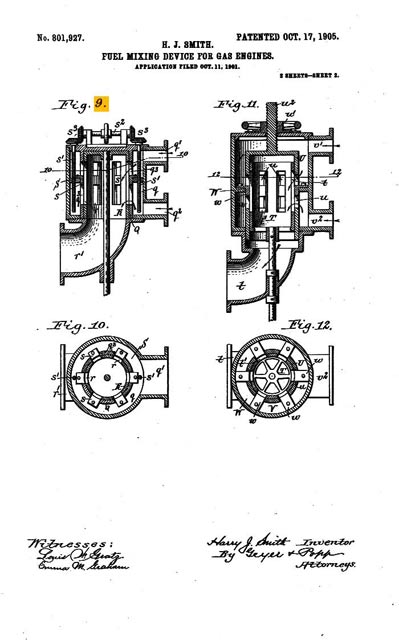
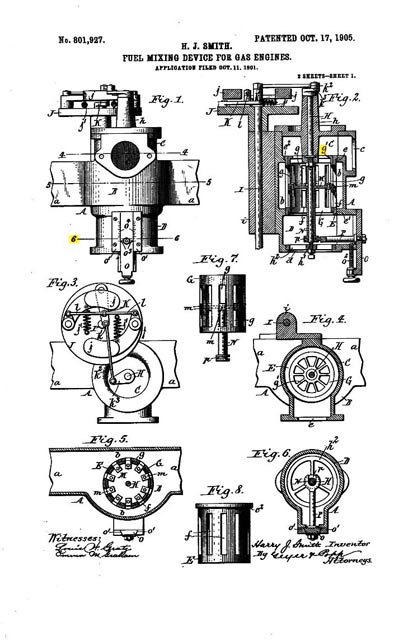
The 1906 patent, number 818,714, was also granted to Smith and assigned to Alberger. It illustrates the valve operating mechanism.


It is amazing how Harry J. Smith detailed all the
Alberger engine design features in his four patents. He was a prolific
inventor and a tour of Google Patents reveals that he
lived in New York City, Philadelphia, and finally Buffalo. His interests
were varied.
Records reveal that Alvan Alberger did obtain one patent
and that is the “stuffing box,” or device that seals the piston rod from
leakage as it traverses from one cylinder to the other. He shows this
ingenious device in patent number
870,152
granted to him on November 5, 1907. It is interesting that this
important patent follows those of Smith!
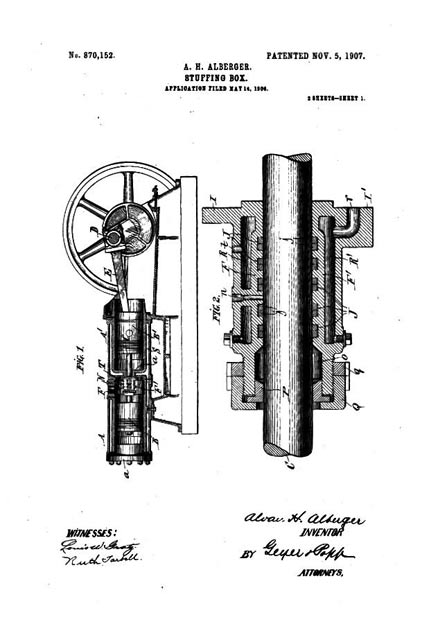
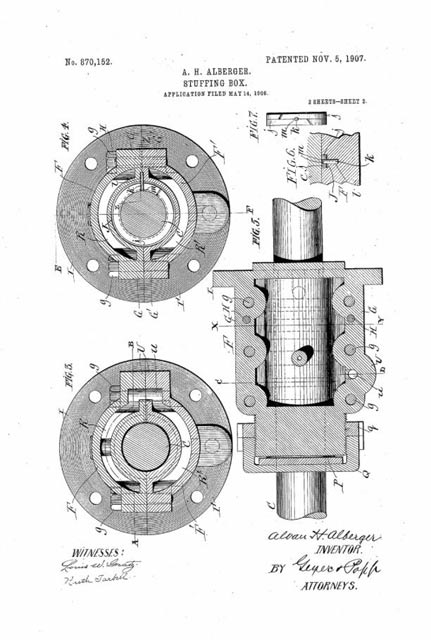
And so, the patent story comes to a close. Now we
proceed to see some real iron!
The Engines
The 40 hp Buffalo Engine
The oldest as well as the smallest existing engine is the 40 hp Buffalo. Now owned and restored by Jon Rozevink of Holgate, Ohio, it was originally removed from a flour mill in the Buffalo, New York, by the late Jim Withers of Osakis, Minnesota. It differs from the later Albergers by having a Rites inertia governor in the flywheel. Note the layer of flour covering it when it was in the original location.
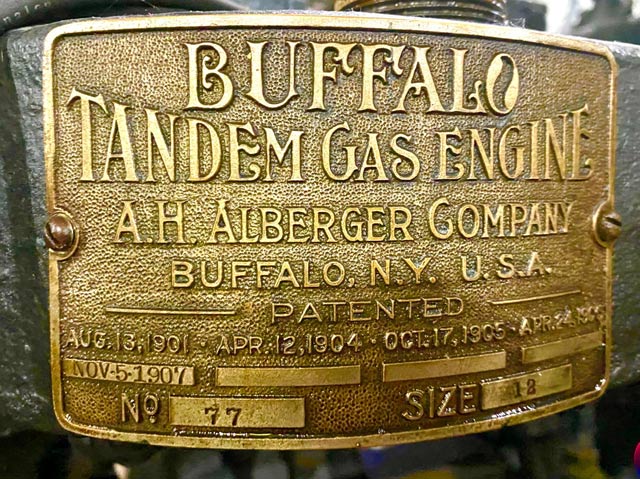
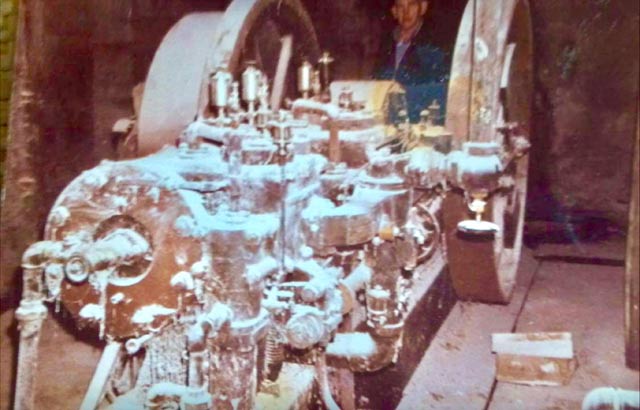

The 80 hp Alberger Engine
This engine powered the Mt. Jewett, Pennsylvania, waterworks. John Wilcox and I removed it and its Deane triplex pump in 1981. Unfortunately, no photos exist of the engine on location. John and I ran it several times and actually pumped with it one evening. The installation was located on a deep ravine just east of town. It was remote and picturesque. Ben and Luke Steffy spent many hours restoring it and producing an exceptional display at Coolspring Power Museum. Many thanks for all the hard work!
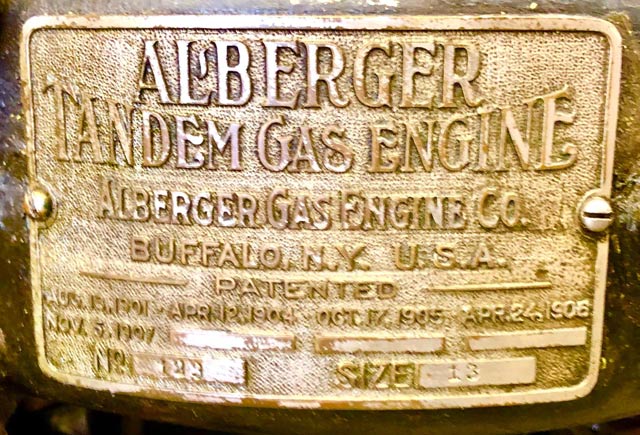
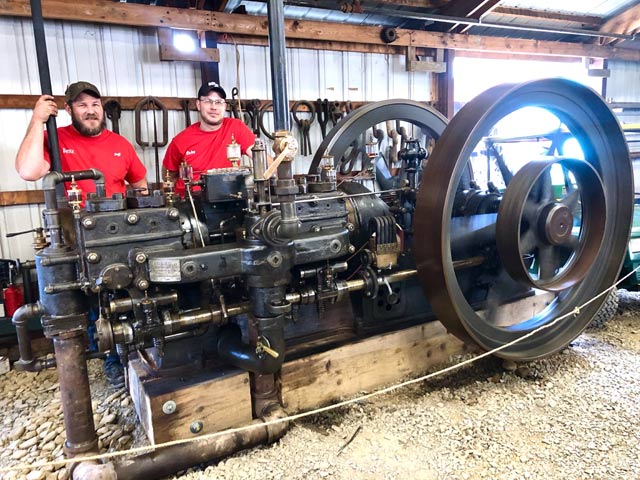
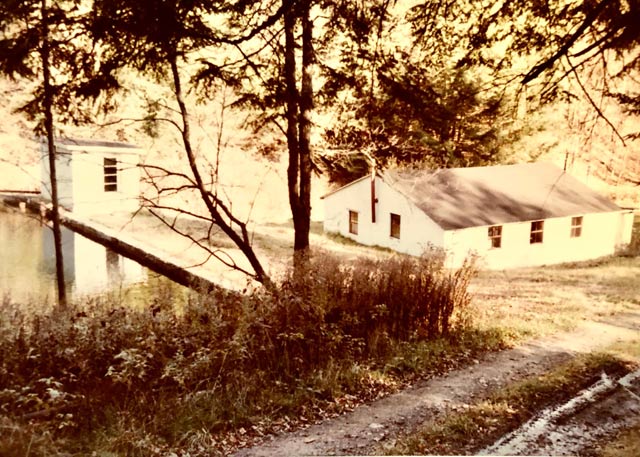

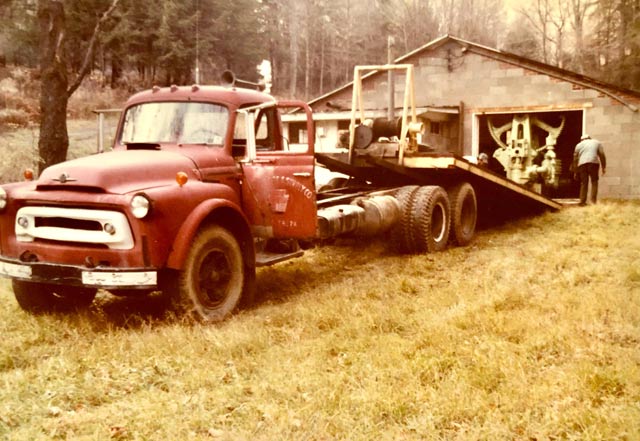
The 125 hp Alberger Engine
John Wilcox located the Kane, Pennsylvania, waterworks and obtained the 125 hp Alberger. He diligently dealt with the firm and obtained the 80 hp for me. Wow! Great. Looks like 1980 and 1981 were going to be busy. We always worked so well together that I volunteered to do the hauling if he would help with the rigging. The old 1956 International was so slow on the road but so easy to rig with. And so, both engines and pumps were brought home. The big 125 was done first. Here we see John adjusting a lubricator as we prepared to start it on New Year’s Eve in 1980. John subsequently sold the 125 to the late Jim Withers and now his son, Keven, is bringing it back to life. It is a magnificent machine with the massive clutch and pump.
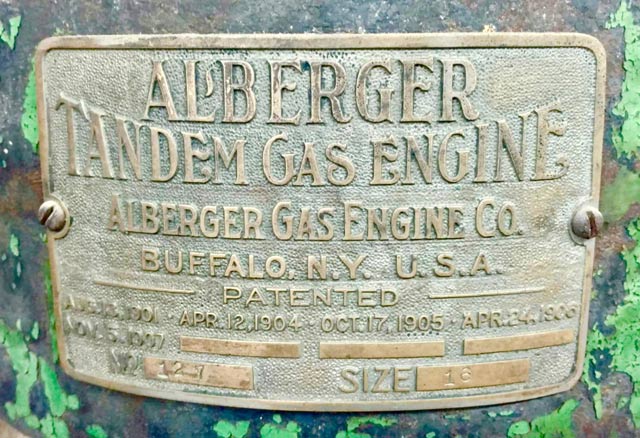
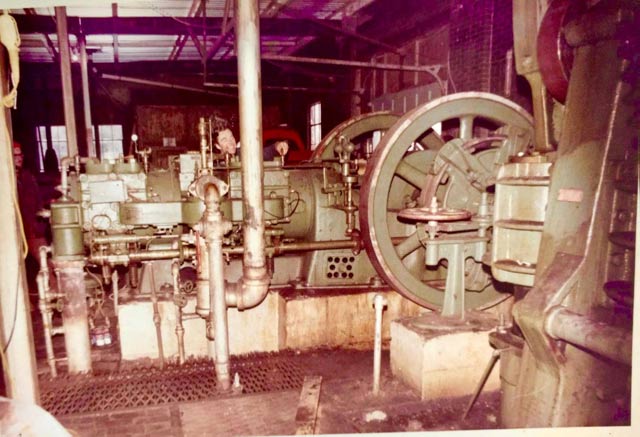

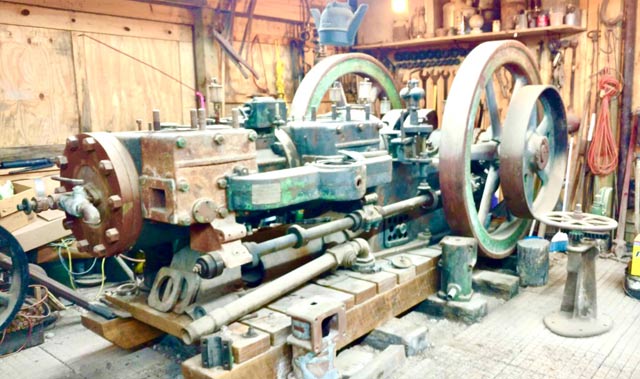
Thus concludes the Alberger story. Indeed, it has been a
fascinating adventure into these magnificent engines, answering many
questions, but raising so many more. Perhaps we will never know!
